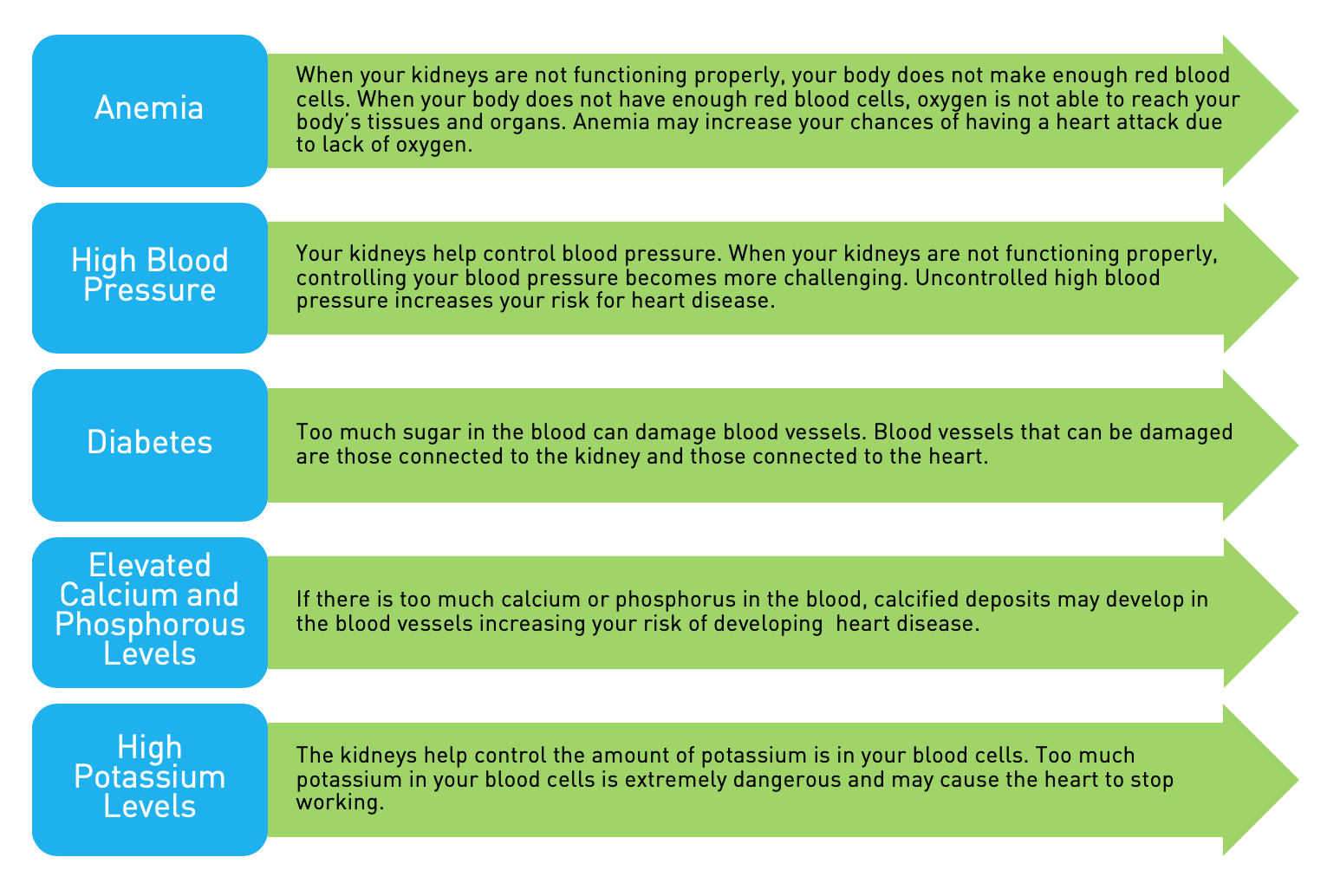What is Fabry disease?
This article originally appeared in the July 2007 issue of aakpRENALIFE.
Fabry disease is a rare inherited disorder first described by Drs. Johann Fabry and William Anderson in 1898. It is one of a large family of diseases known aslipid storage disorders. The enzyme that causes the disease was identified in the 1960s and since then much progress has been made in its treatment.Symptoms may appear in early childhood, and the disease can progress to kidney and heart failure.
What causes Fabry disease?
Fabry disease is caused by inheriting a faulty gene. When a gene is faulty, the enzyme it controls is defective,and Fabry disease happens when the enzyme known as a-galactosidase A (α-GalA) is defective and does not work properly. Enzymes like α-Gal A are simply molecules that control the biochemical reactions in the body. One of their duties is to breakdown and help shred and recycle the molecules the body uses on a daily basis.When these normal chemical breakdown processes are altered, there is an excessive build up of compounds. This enzyme is responsible for the breakdown of a fatty lipid called globotriasylceramide(GL3). When α-Gal A does not function, GL3 gathers and is placed in the walls of blood vessels in tissues throughout the body, interfering with their function. Fabry diseaseis called a “storage disorder”due to this abnormal buildup.The buildup eventually causes obstruction of blood flow,which ultimately leads toischemia (lack of oxygen andnutrients) of the surrounding tissues. This accounts for the symptoms associated with this disease.
The disease is extremely rare, affecting only around 1 in 40,000 live births. [1] In recent years a drug has become commercially available to treat this order.
How is Fabry disease inherited?
The gene that makes α-Gal A is located on the X chromosome. Each person has a chromosome pair that determines their gender. This can either be an XX or an XY. The X chromosome is always inherited from the mother, while the father can contribute an X or a Y to the offspring. A child who inherits a Y from the father and the X from the mother is male (XY) while one who inherits the X from a father and an X from the mother is a female.
X-linked disorders, transmitted only on the X chromosome, mainly are seen in males who have only one X to contain the gene. If they receive the defective gene on this chromosome, they will have symptoms. However, females can carry the gene on one of their two X chromosomes. Because the other X chromosome “dominates,” that is, determines the inherited traits to be carried on, females seldom exhibit symptoms of the disease.
Males are more likely to have symptoms because they only have one X-chromosome. Females can be severely affected if the dominant X chromosome is not working properly, letting the other, so-called recessive chromosome pass on the defective gene.
Symptoms
Symptoms of Fabry disease commonly begin in childhood or adolescence and typically intensify with time. Here is a summary of the most common symptoms:
Painful burning sensations
These often begin with episodes of painful burning sensations in the hands and feet (acroparesthesias). Stress, exercise, illness and extremes in temperature often worsen the symptoms.
Angiokeratomas
Angiokeratomas are dark red skin spots on the skin. They are often seen on children mostly, located between their bellybutton and knees. They are often seen on fingertips.
Decreased ability to perspire
Some patients can also exhibit a decreased ability to perspire, leading to the inability to exercise, as well as discomfort when the weather is warm.
Corneal deposits
Ophthalmologists usually note corneal deposits in patients with Fabry during routine eye exams. [2] These deposits usually do not affect the patient’s vision.
Other symptoms
Patients often display nonspecific symptoms such as fatigue, anxiety, depression, diarrhea and abdominal pain.
Clinical course
The disease usually has a slow progression. Proof that Fabry disease is causing heart and kidney problems usually show between the ages of 30 to 45. This is usually the time of diagnosis for most patients since this disease is commonly overlooked in childhood due to its rarity.
In addition to kidney failure, the disease in advanced stages may cause an enlarged heart, disturbances in the cardiac rhythm and valvular abnormalities. When decreased blood flow occurs in the brain, patients can develop dizziness, seizures and strokes.
[3]
How does Fabry disease affect the kidneys?
Proof that Fabry disease is affecting your kidneys can be shown as protein in urine, progressive kidney disease, increased urination and thirst. This is due to the kidney’s decreased concentration ability. The deposition of GL3 in kidney cells can cause the kidneys to stop filtering wastes from the body. This can gradually lead to kidney failure, and requires either dialysis or a kidney transplant for treatment.
How is Fabry disease diagnosed?
Diagnosis is usually sought once symptoms of the disease appear or if there is a family history of the disorder. An assessment should also be performed on family members of newly diagnosed patients and on females known or suspected to have the disease. Initial evaluations should include detailed medical and family histories, complete physical exams and laboratory and X-ray studies. Echocardiograms are usually done to evaluate for heart disease.
Lab tests should consist of examination of urine sediment, measurement of renal function and proteinuria, and a screening enzyme evaluation for α-gal A. Those who screen positive should have the enzyme activity in leukocytes measured. Low levels of α-gal A are diagnostic of Fabry disease in men. In females, enzyme tests results can be misleading so genetic testing is usually more helpful to diagnose the disease and identify female carriers. In some cases, diagnosis is made by biopsy of skin lesions and/or kidneys, but usually less invasive tests as those described above are used.
[4]
Treatment
Two companies have synthesized the enzyme, α-gal A, and it is now available for commercial use. The Genzyme product, agalsidase beta (Fabrazyme) is available in the USA and in Europe. The TKT (Transkaryotic Therapies, Inc) product, agalsidase alfa (Replagal) is only available in Europe.
With continued use, GL3 placed in the heart, liver and kidney decreases. The quality of life and pain symptoms also improve. The [5] infusions are well tolerated, although some patients have experienced chills and a slight fever. The pathological changes in the kidney are dramatic. Deterioration in kidney function is slowed. In one study, the plasma GL3 levels decreased 50 percent. Cardiac conduction improved. Patients started eating better and gained weight.
[6]
Many patients treated with agalsidase every two weeks showed complete disappearance of deposits from the kidney blood vessel walls and from the skin.
[7]
Marked improvement in the accumulation of GL3 was noted in kidney biopsies. [8] Even after 30-36 months the long-term effects are minimal, GL3 levels remained low, and kidney function remained stable. [9] [10] After 4 to 4.5 years of study, patients continue to do well.
Many patients with Fabry disease can receive infusion therapy at home with good results. Women may also have Fabry disease. When treated with agalsidase, the GL3 levels decreased, and the cardiac abnormalities (left ventricular mass) improved within 27 and 41 weeks. Quality of life improved and renal function did not deteriorate.
[11]
Advanced disease
It has been demonstrated that in Stage 3 CKD (glomerularfiltration rates between 30and 59 cc/min) the rate of kidney disease progression was slowed. [10] Clinical signs of nervous system involvement also improved. [12] Skin biopsies may be an easier way to monitor the effectiveness of therapy. [13] Heart failure is a late sign of the disease, but improves with therapy. Heart and lung exercise testing also improves [14] life threatening events and worsening kidney function can be delayed with therapy, even in patients who had overt kidney disease. It is recommended patients who have kidney disease related to Fabry also be treated with angiotensin-receptor blockers and converting enzyme inhibitors to help preserve kidney function.
Living with Fabry disease
Since Fabry disease is a very rare disorder, few people understand what patients and their families must experience. It is important patients and their families network with each other, and seek help from their friends and a healthcare team.
There are a number of Fabry disease support groups available across the USA. AAKP has partnered with Emory Genetics Laboratory to test individuals for Fabry disease. The partnership, called the Fabry Family Member Testing Project, is a program intended to test individuals with a known family history of Fabry disease.
For more information about the Fabry Family Member Testing Project, call the Emory Lysosomal Storage Disease Center at (404) 778-8565 or (800) 200-1524. You can also visit the Fabry Family Member Testing Project Web site at http://www.genetics.emory.edu/LSDC/fabryproj.php.
References
- Desnick, R., Y. Ioannou, and C. Eng, Alpha-galactosidase A deficiency: Fabry disease, in The Metabolic and Molecular Bases of Inherited Disease, C.R. Scriver, Editor. 2006, McGraw Hill: New York. p. 3733-3774.
- Sodi, A., et al., Ocular manifestations of Fabry’s disease: data from the Fabry Outcome Survey. Br J Ophthalmol, 2007. 91(2): p. 210-214.
- Fellgiebel, A., M.J. Muller, and L. Ginsberg, CNS manifestations of Fabry’s disease. Lancet Neurol, 2006. 5(9): p. 791-5.
- Germain, D.P., [Fabry’s disease (alpha-galactosidase-A deficiency): physiopathology, clinical signs, and genetic aspects]. J Soc Biol, 2002. 196(2): p. 161-73.
- Eng, C.M., et al., A phase 1/2 clinical trial of enzyme replacement in fabry disease: pharmacokinetic, substrate clearance, and safety studies. Am J Hum Genet, 2001. 68(3): p. 711-722.
- Schiffmann, R., et al., Enzyme replacement therapy in Fabry disease: a randomized controlled trial. JAMA, 2001. 285(21): p. 2743-2749.
- Eng, C.M., et al., Safety and efficacy of recombinant human alpha-galactosidase A–replacement therapy in Fabry’s disease. N Engl J Med, 2001. 345(1): p. 9-16.
- Thurberg, B.L., et al., Globotriaosylceramide accumulation in the Fabry kidney is cleared from multiple cell types after enzyme replacement therapy. Kidney Int, 2002. 62(6): p. 1933-1946.
- Wilcox, W.R., et al., Long-term safety and efficacy of enzyme replacement therapy for Fabry disease. Am J Hum Genet, 2004. 75(1): p. 65-74.
- Eto, Y., et al., Enzyme replacement therapy in Japanese Fabry disease patients: the results of a phase 2 bridging study. J Inherit Metab Dis, 2005. 28(4): p. 575-583.
- Baehner, F., et al., Enzyme replacement therapy in heterozygous females with Fabry disease: results of a phase IIIB study. J Inherit Metab Dis, 2003. 26(7): p. 617-627.
- Schiffmann, R., et al., Enzyme replacement therapy improves peripheral nerve and sweat function in Fabry disease. Muscle Nerve, 2003. 28(6): p. 703-710.
- Thurberg, B.L., et al., Monitoring the 3-year efficacy of enzyme replacement therapy in fabry disease by repeated skin biopsies. J Invest Dermatol, 2004. 122(4): p. 900-908.
- Bierer, G., et al., Improvement in serial cardiopulmonary exercise testing following enzyme replacement therapy in Fabry disease. J Inherit Metab Dis, 2006. 29(4): p. 572-579.
Stephen Fadem, MD, FACP, FASN, served as vice president of the AAKP Board of Directors, Co-Medical Editor ofKidney Beginnings: The Magazine and aakpRENALIFE. He is also a member of the AAKP Medical Advisory Board. Dr. Fadem is a practicing nephrologist in Houston, TX.
Dana Mitchell, MD, is a practicing nephrologist in Houston, TX. She is a graduate of Louisiana State University Medical School and completed an internal medicine residency also at LSU. She completed nephrology fellowship training at University of Alabama at Birmingham in 2006 where she had the opportunity to study Fabry disease under Dr. David Warnock.
























